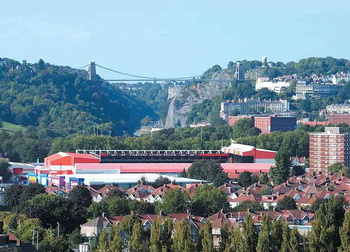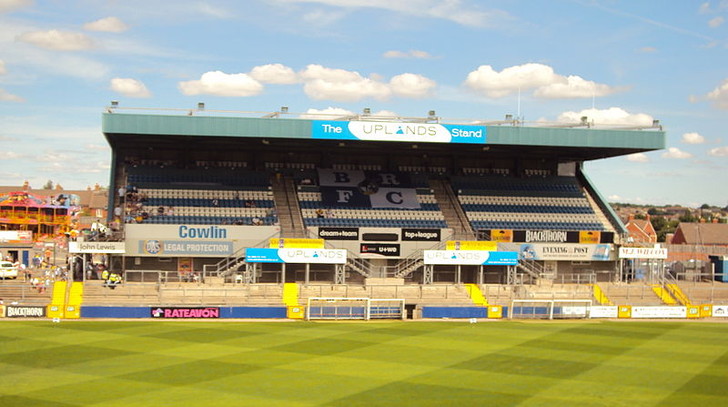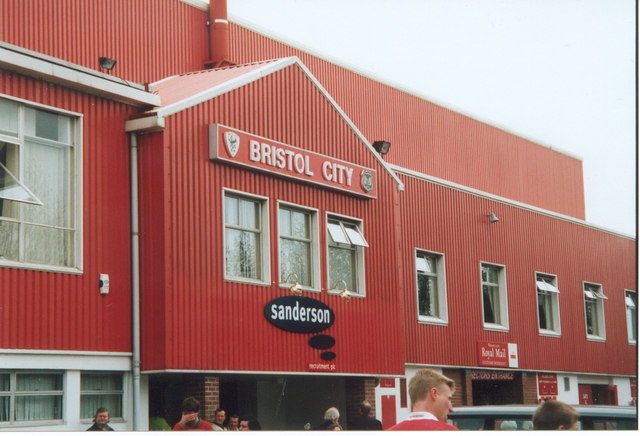 Bristol is a city with countless sporting links. Perhaps it’s because it sits so close to Wales, separated only by the Bristol Channel and linked by the M4, but rugby is just as popular as football there.
Bristol is a city with countless sporting links. Perhaps it’s because it sits so close to Wales, separated only by the Bristol Channel and linked by the M4, but rugby is just as popular as football there.
It’s also worth noting that Gloucestershire County Cricket Club has based its headquarters within the city’s borders. Obviously we’re not as bothered by Bristol Rugby or any local cricketing teams as we are about the football clubs that ply their trade in the city that lies between South Gloucestershire and North Somerset.
There’s plenty to talk about on a footballing front, mind. As well as both Bristol City and Bristol Rovers, there are several smaller clubs that are at least slightly worthy of a shout out, owing to the fact they continue Bristol’s association with football as a sport.
Clifton United, for example, is a thriving club for junior players that has achieved Charter Standard with the Football Association. Exactly the same thing can be said about Ashton Football Club, which was set-up in 1994 and incorporates the senior side of Ashton & Backwell United. We’re mainly interested in the professional clubs, however, so we can we tell you about them?
{module Maps – Cities – Bristol}
Football Stadiums in Bristol
| Stadium | Capacity | Team | League |
|---|---|---|---|
| Ashton Gate | 27,000 | Bristol City | Championship |
| Memorial Stadium | 12,300 | Bristol Rovers | League One |
Bristol Rovers – Memorial Stadium (2.11 Miles to Bristol Castle)

The first major football club formed in the city of Bristol was Bristol Rovers, except back in 1883 they were known as Black Arabs Football Club. Despite modern day sensibilities, the name actually came from a combination of a local rugby club named the Arabs and the fact that they played in all-black shirts. The name only lasted a year, though, and the club re-branded itself as Eastville Rovers in 1884. Until the 1887-1888 season, when the club entered the Gloucestershire Cup, they only played friendly games at an amateur level. It didn’t take long for things to get more serious, though, culminating in the decision to be one of the founding members of the Bristol and District League, which would later be renamed as the Western League, in 1892. Professionalism followed five years later, as did the decision to become Bristol Eastville Rovers.
At the start of 1899 the club chose to drop the ‘Eastville’ and become simply the Bristol Rovers that we know today, later in the year joining the Southern League. They played their football in this division until 1920, winning the title in 1905. When the Football League’s Division Three was formed in 1920, all Southern League teams were moved into it and Bristol Rovers went with them. They didn’t manage to win it for more than thirty years in 1953 and only made it out of the third tier of English football five more times over the following sixty plus years. The highest heights that the club has hit during its existence is sixth place in the second-tier of the Football League, which they managed in both 1956 and again three years later. Success might not have been easy to come by for the Pirates but they’ve only been relegated out of the Football League once, which happened in 2014.
When the Football Pools did an in-depth report in 2008 they found that the Bristol derby was considered to be the eight most fierce in all of English football. The relative success of Bristol City compared to their neighbours means that they don’t play each very often. It’s not just City that Rovers aren’t very friendly towards, even if that is the most vitriolic of rivalries. There’s also a dislike between the Gas and numerous other West County clubs like Swindon Town, Plymouth Argyle, Exeter City and Yeovil Town. The proximity of Wales has also led to the invention of the Severnside derby when Rovers go up against Cardiff City. Nowadays the club plays its football at Memorial Stadium, the ground that opened in 1921 and is dedicated to the memory of Bristol Rugby players who lost their lives in the First World War.
Bristol City – Ashton Gate Stadium (1.76 Miles to Bristol Castle)

Eleven years after the formation of Black Arabs Football Club, Bristol South End was created in a different part of the city of Bristol. In 1897, just three years after their formation, they turned professional and adopted the current name of Bristol City. Three times out of their first four in the Southern League the new side finished as runners-up, so in 1900 a decision was reached to merge with local side Bedminster Football Club in the hope that it would allow them to push on to the next level. It worked and Bristol City joined Luton Town and Woolwich Arsenal in becoming the third football team based to the South of Birmingham to join the Football League.
It didn’t take long for success to come Bristol City’s way, with their victory over Blackpool Rovers in the club’s first ever game in the Football League a sign of what was to come in those early days. In the 1905-1906 season they became the first club ever to win thirty games in a season as they became Second Division champions. The following year proved to be only slightly more difficult, with the Robins ending their inaugural First Division campaign as runners-up. Sadly things went downhill from there, losing the FA Cup final to Manchester United in 1909 and then getting relegated from the top-flight in 1911. They wouldn’t make their way back up again until 1976, spending the intervening years yo-yoing up and down between the Second and Third Divisions.
From the moment the club was formed it has always been successful than Bristol Rovers, much to the chagrin of their rivals. That’s not to suggest that Bristol City has endured some tough times. The club found itself in dire financial trouble in 1982, eventually leading to a declaration of bankruptcy. BCFC (1982) Limited acquired the players contracts and several players agreed to settle their contracts at half their value, but many local businesses never received payment for work done. Perhaps, then, Bristol Rovers can claim the moral victory even if not a footballing one. By 2017 the two clubs had met 105 times and City had won 43 of those fixtures. As with Rovers, Bristol City has an enduring rivalry with Cardiff City despite the fact that Ashton Gate Stadium is more than twenty-five miles from Cardiff City Stadium.
